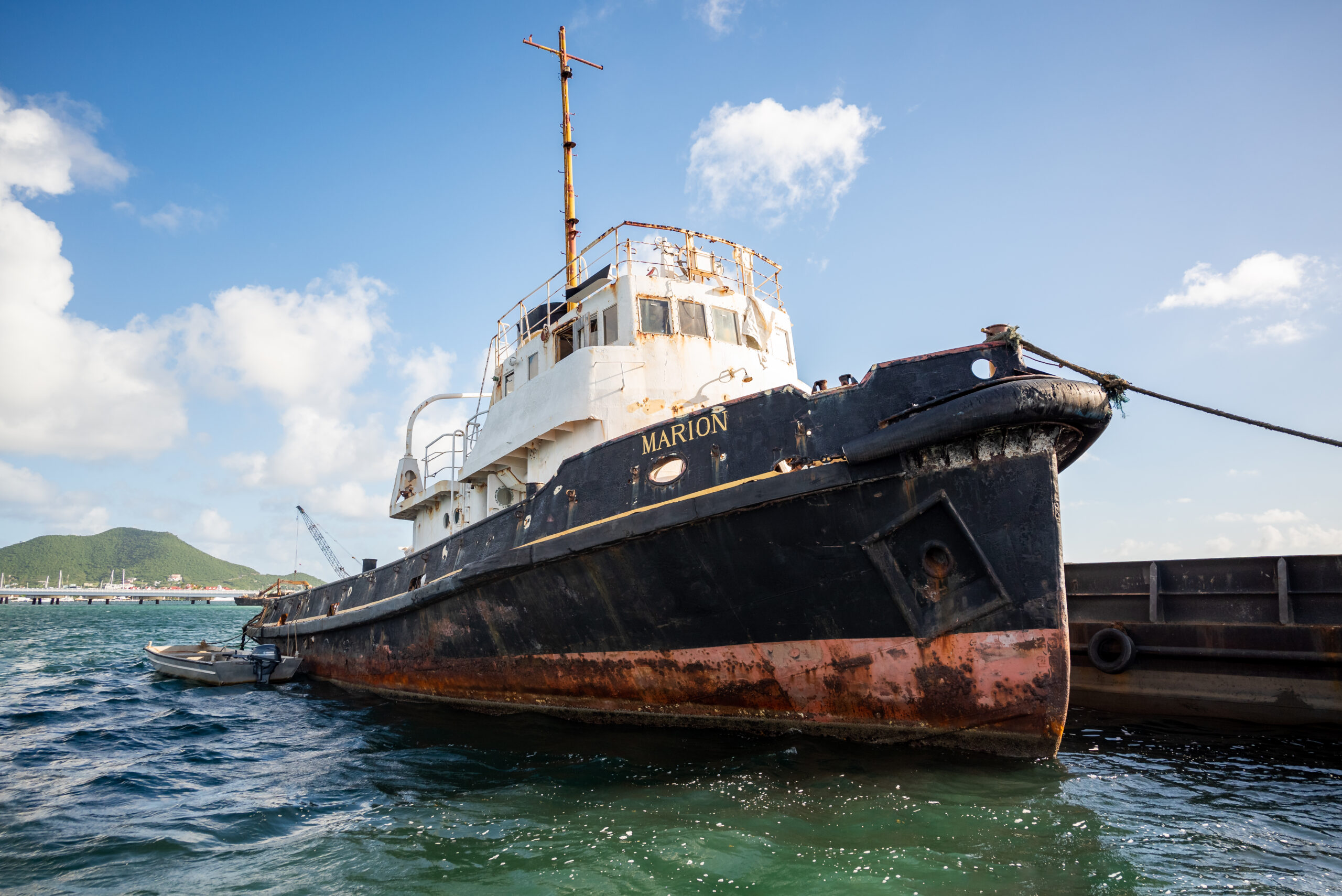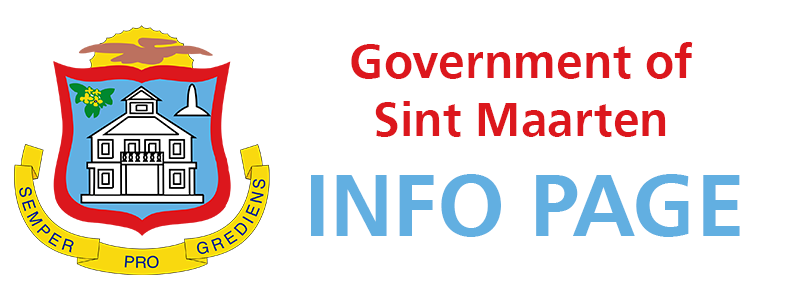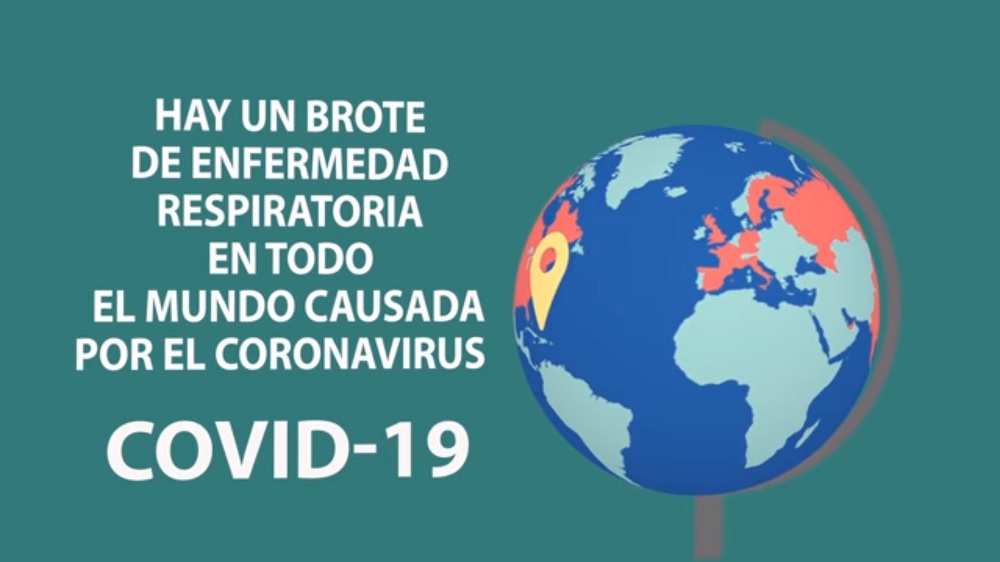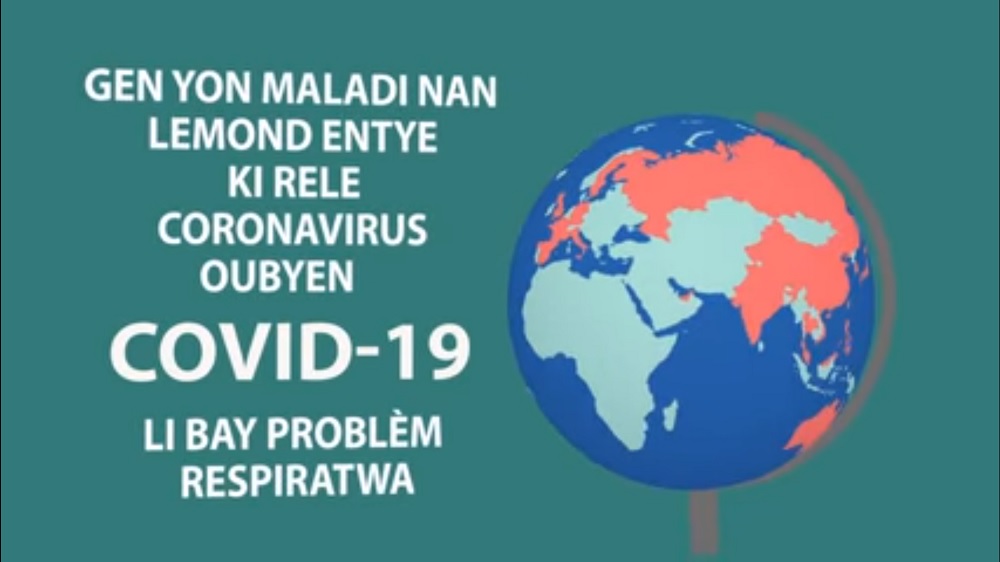Proposed location of Marion artificial reef identified, to be placed in Man of War Shoal Marine Park
PHILIPSBURG, Sint Maarten – After intensive consultation with stakeholders, the National Recovery Program Bureau (NRPB) is in the process of finalizing arrangements to sink the salvaged 27-meter-long tugboat Marion in the Man of War Shoal Marine Park to create an artificial reef and dive site.
Since January 2022, the NRPB has held discussions with a variety of stakeholders, including dive operators, the Sint Maarten Nature Foundation, and the Inspectorate of Shipping and Maritime Affairs of the Ministry of Tourism, Economic Affairs, Transport and Telecommunication (TEATT).
Four (4) potential sites were originally proposed for the artificial reef. As a result of the stakeholders’ feedback and the criteria set forth by the environmental and social guidelines of the World Bank and the Government of Sint Maarten, it was decided to sink the Marion at a location called “Tiegland” in the Man of War Shoal Marine Park.
Most stakeholders preferred Tiegland for two main reasons. Firstly, the site is in the Man of War Shoal Marine Park, which is the only marine protected area in Sint Maarten’s territorial waters. Secondly, the site will be at the relatively shallow depth of 23 meters, making it accessible for divers across all skill levels.
Approximately three (3) nautical miles south of Great Bay, the Man of War Shoal Marine Park is a sanctuary for whales, dolphins, sea turtles, sharks, coral reefs, and a wide array of fish. The marine park is managed by the Sint Maarten Nature Foundation.
The sinking of the Marion will be the capstone of the shipwreck removal activity of the Sint Maarten Trust Fund’s Emergency Debris Management Project (EDMP). Under this specific activity, exactly 139 damaged vessels, including the Marion, were removed from the Simpson Bay Lagoon.
Completed in December 2021, this activity was managed by the NRPB on behalf of the Government of Sint Maarten, executed by contractor KMS N.V., and supervised by EOS Maritime J.V. with the support of Sint Maarten Nature Foundation. All waste materials from the shipwreck salvaging activity were exported abroad for environmentally friendly reuse or disposal. This was a key aspect of the activity, as one of its overarching goals was to prevent waste from ending up in Sint Maarten’s waste disposal sites.
From a selection of potentially suitable shipwrecks, the Marion was chosen to be transformed into an artificial reef because of her sound structural integrity, manageable size, and dense steel hull. The combination of these factors makes the Marion an ideal candidate to be colonized by soft corals, sponges, barnacles, and marine plants.
The Marion’s sinking is currently estimated to take place in the last quarter of 2022. This is dependent on good weather conditions and clearance from the relevant authorities.
Once sunk, it is expected that the Marion will, overtime, become a thriving ecosystem, thereby providing a habitat for a wide variety of aquatic flora and fauna. It will also be an active dive site, which will provide more options for recreational divers and increase the diversity of Sint Maarten’s tourism product.
Artificial reefs also serve as nurseries to many fish species by providing a safe and undisturbed space for fish to reproduce and grow to adulthood. Although fishing is not permitted in the marine park because of its protected status, the Marion can thus benefit the fishing industry in the long-term.
“The ‘Marion’ is being given a new life as it transitions from a ship that was damaged and wrecked in Hurricane Irma to an artificial reef that will contribute to the environment and the economy for years to come. The decision to create this artificial reef is another example of the positive impact that the Trust Fund is having on the environment, economy, and livelihood of Sint Maarten and its residents. Through the NRPB, on behalf of the Government of Sint Maarten, we are not only restoring and repairing what was destroyed during the hurricane, but we are consistently looking to build and shape the resilience of our economy, society, and natural environment,” said NRPB Director Claret Connor.
For more information about the Marion, please visit www.nrpbsxm.org/shipwrecks. Persons with additional questions or inquiries can send an e-mail to info@nrpbsxm.org.
The Sint Maarten Trust Fund is financed by the Government of the Netherlands, managed by the World Bank, and implemented by the NRPB on behalf of the Government of Sint Maarten.










